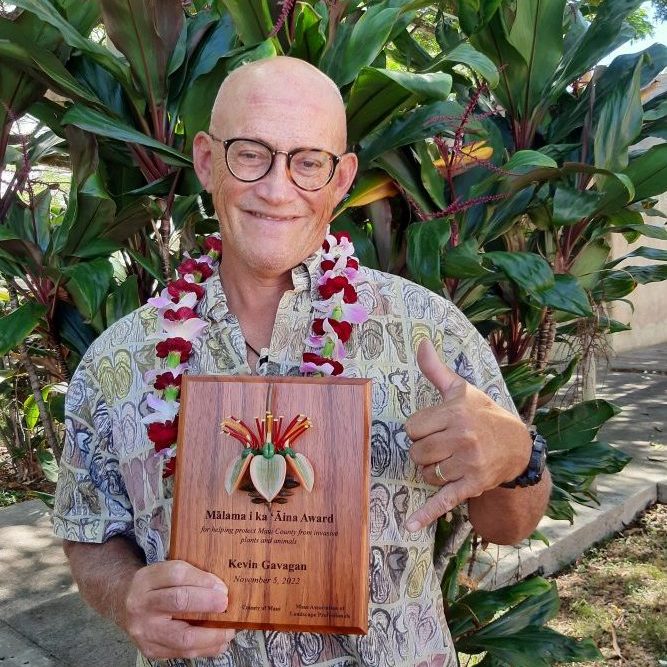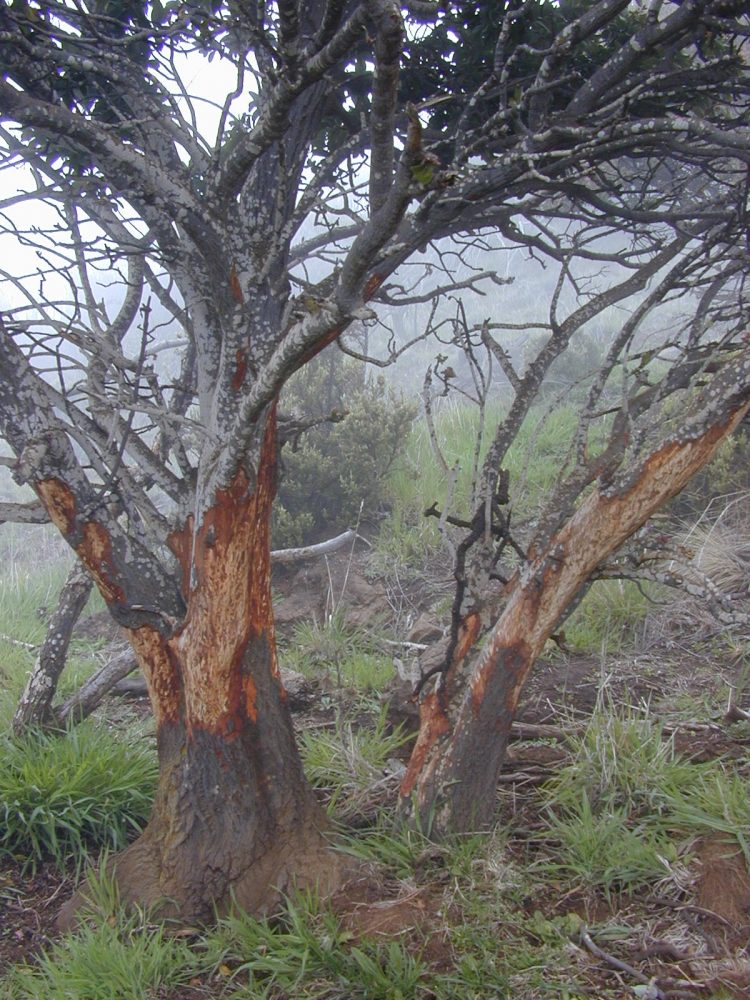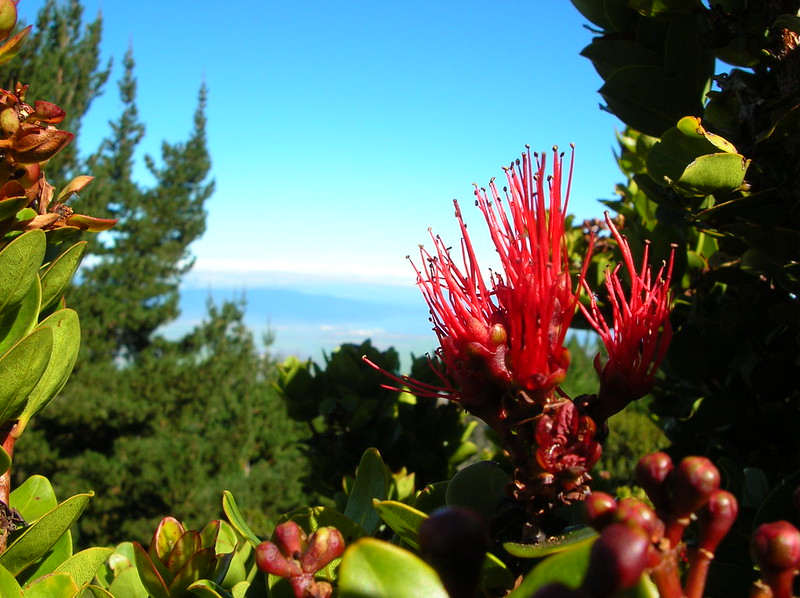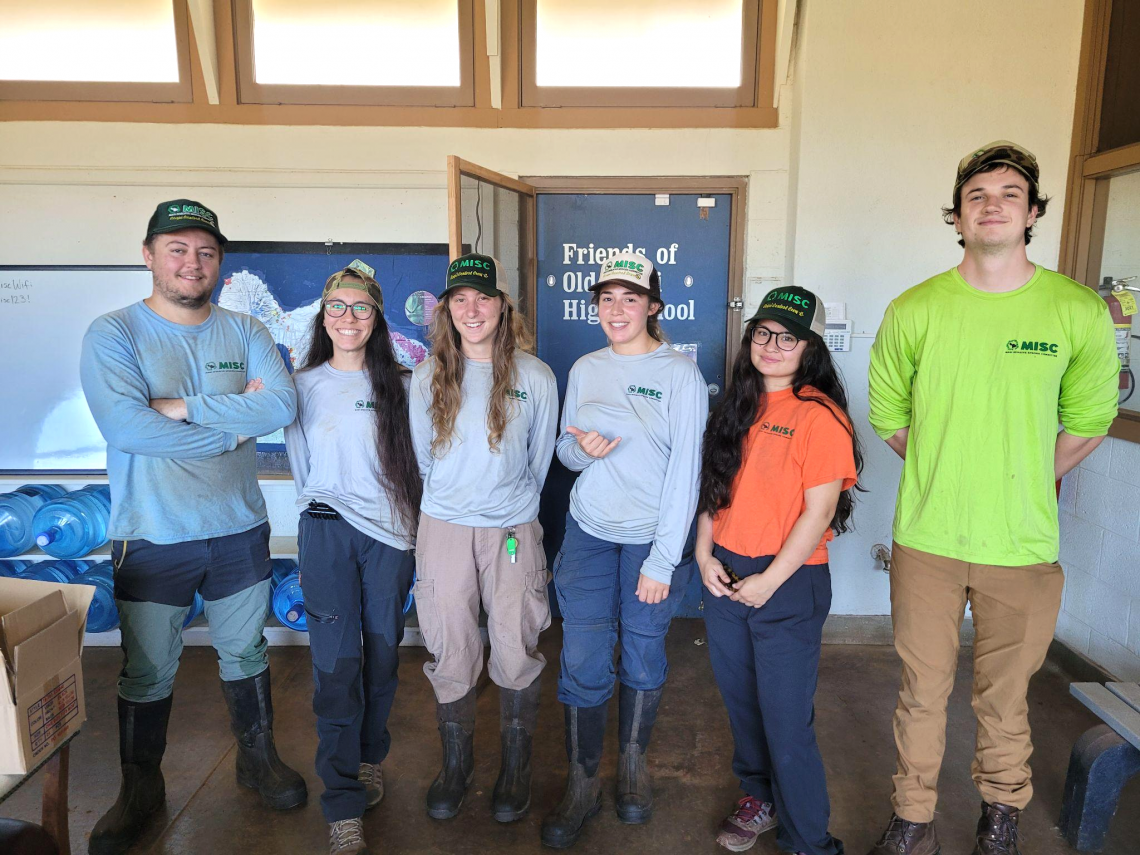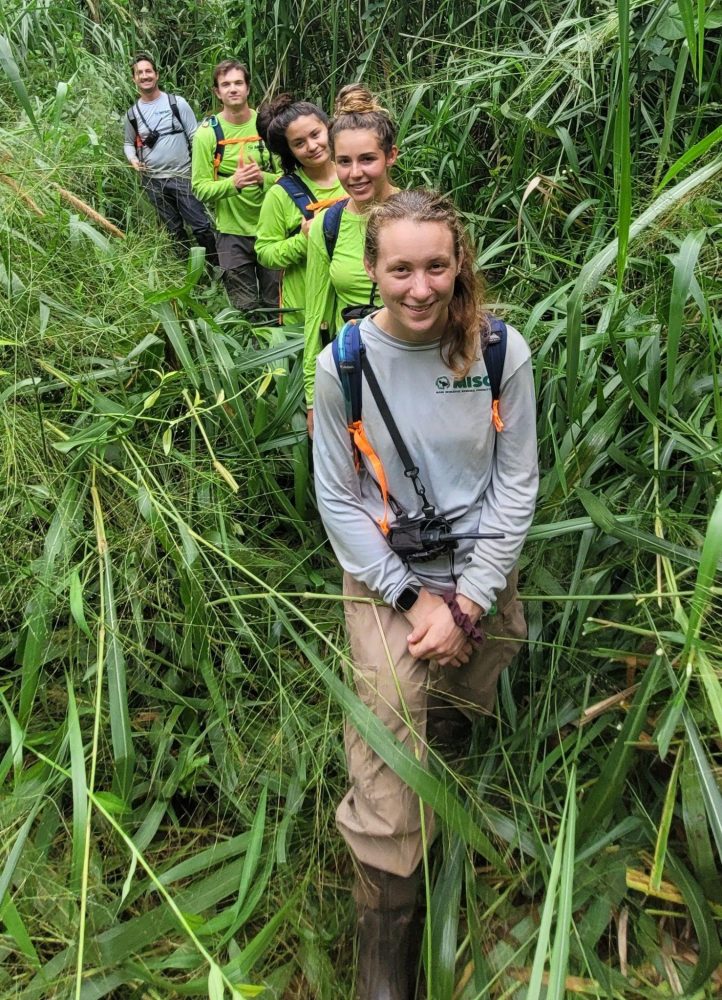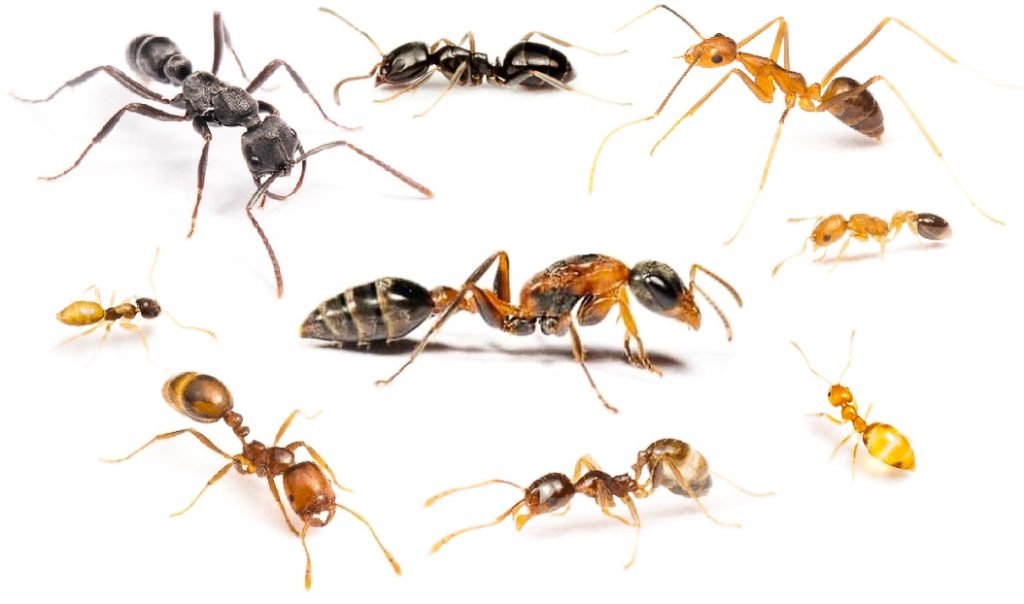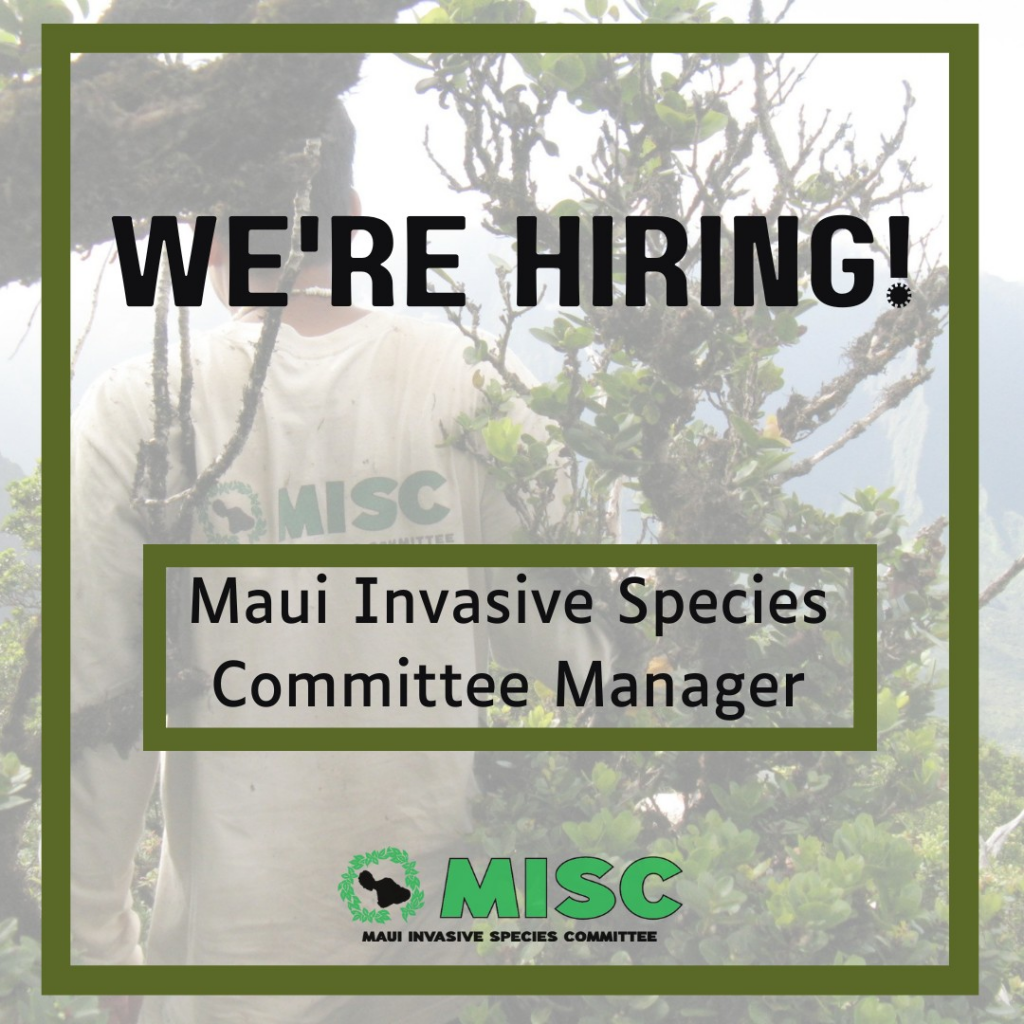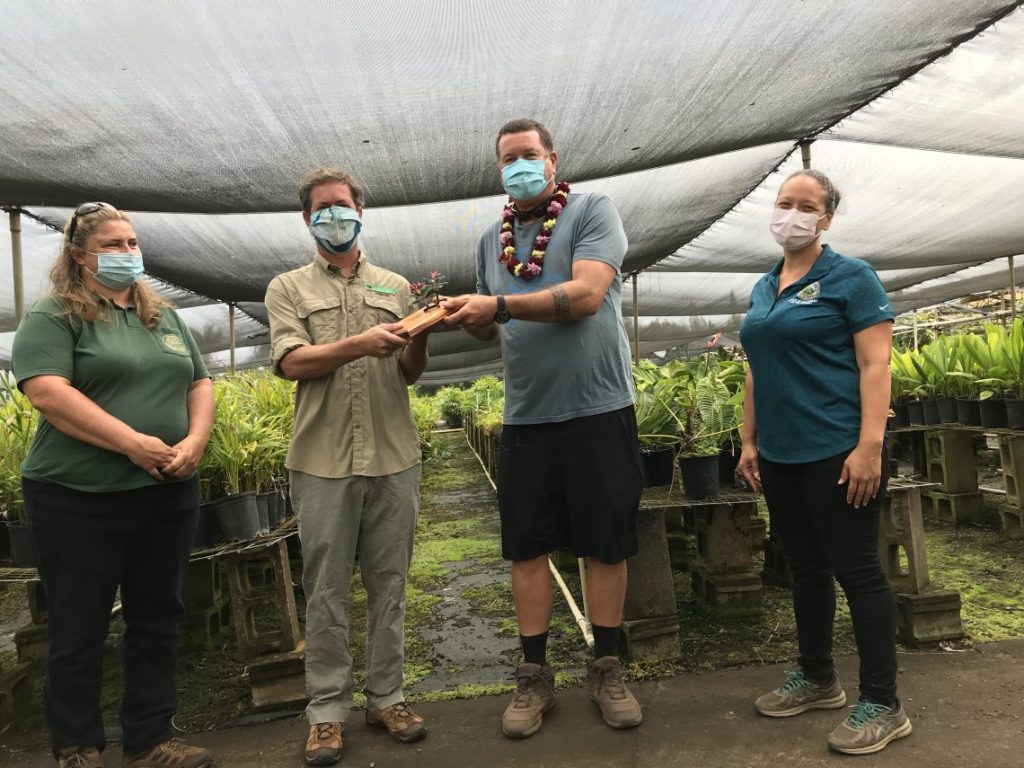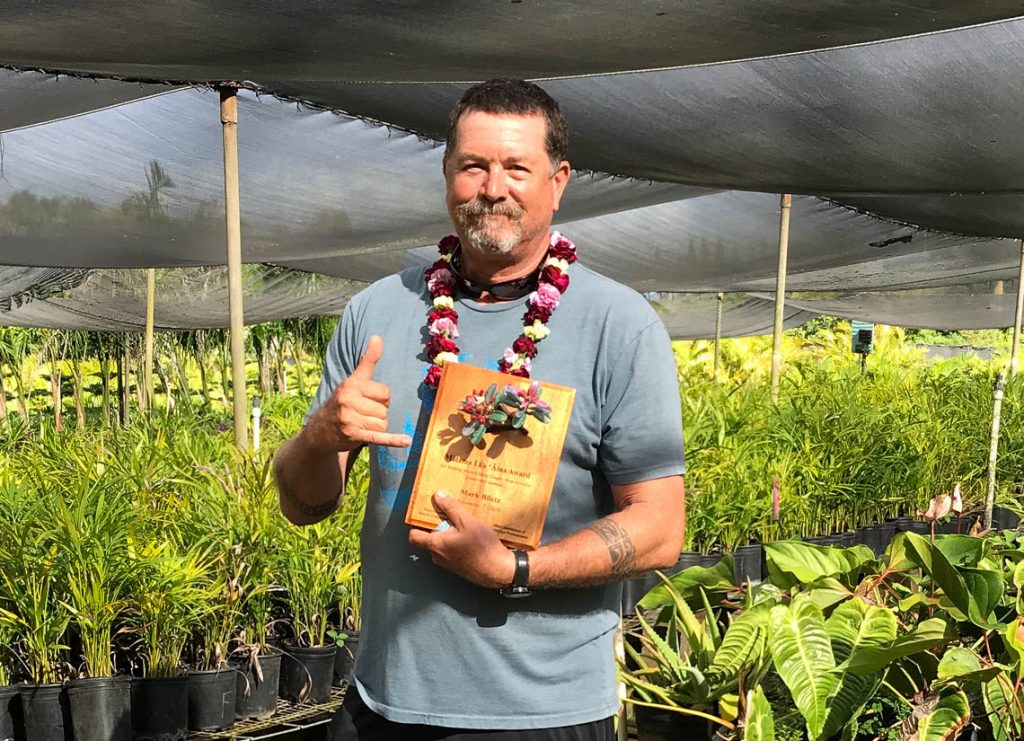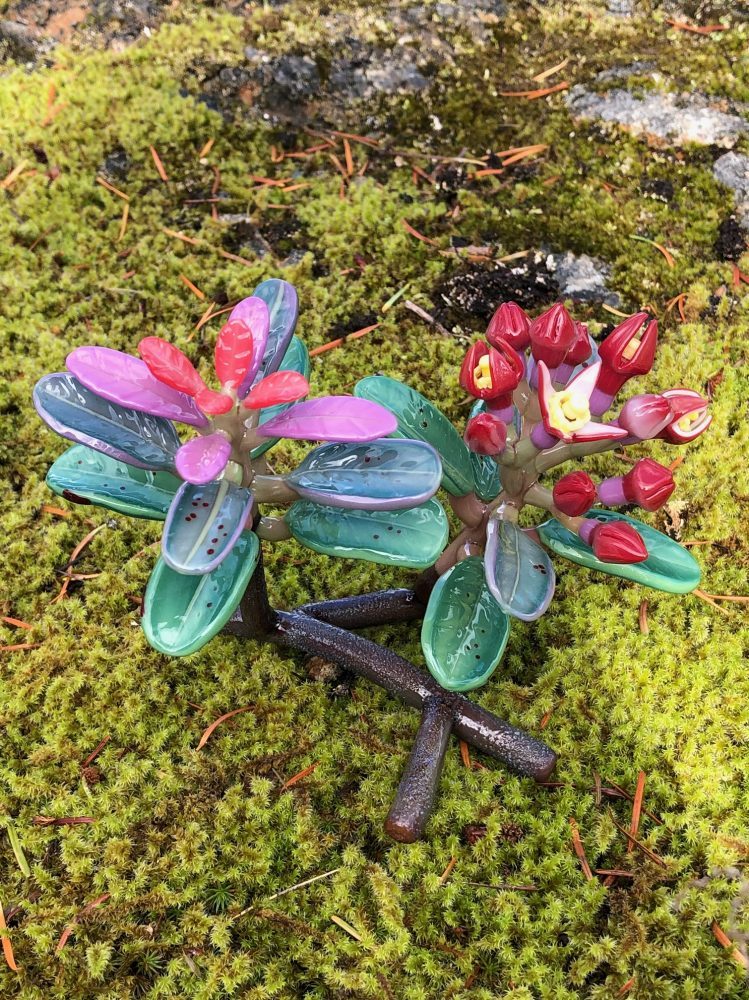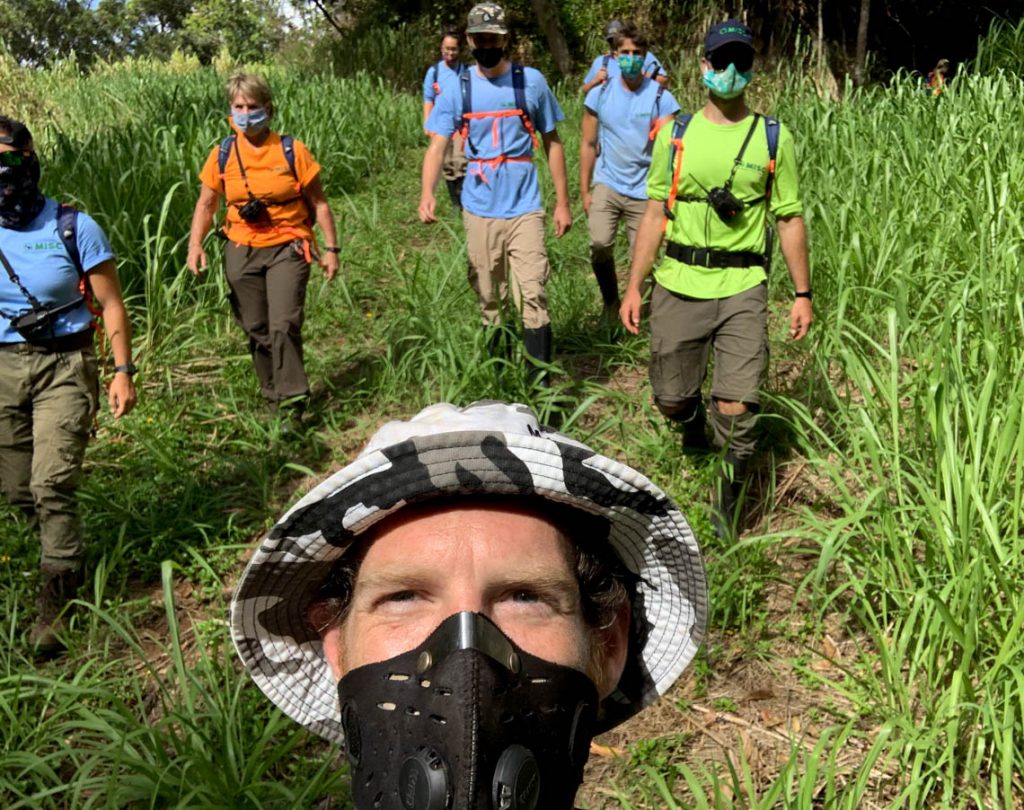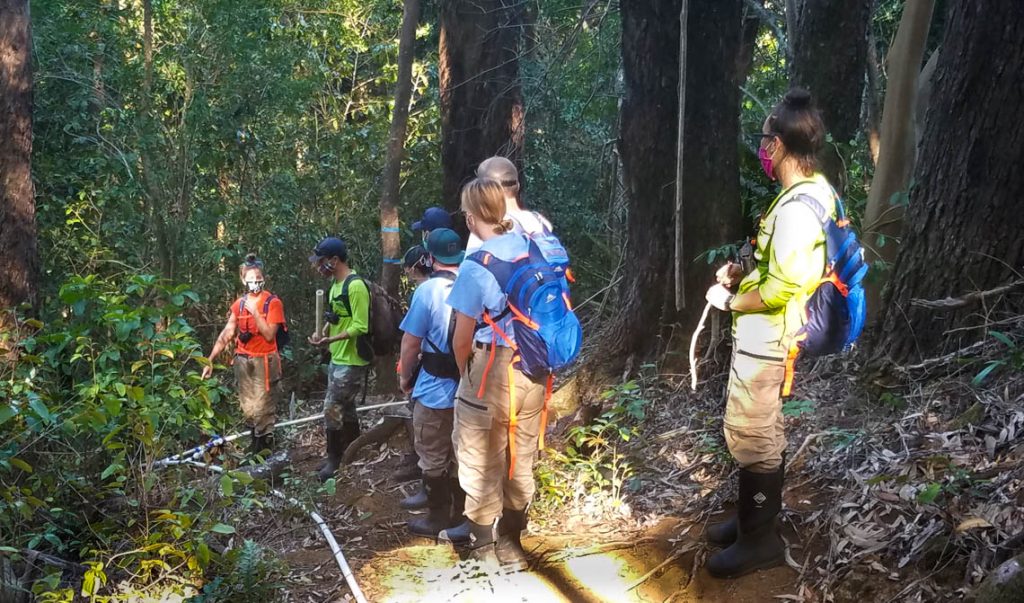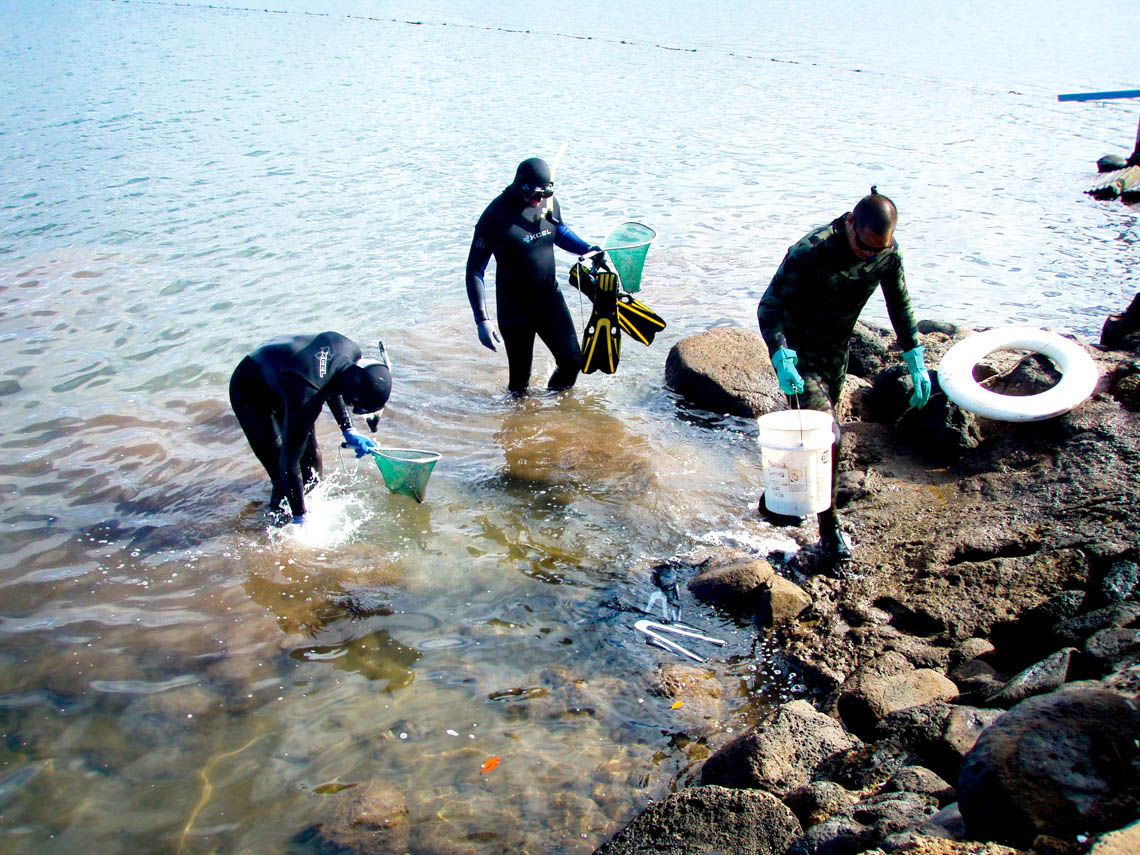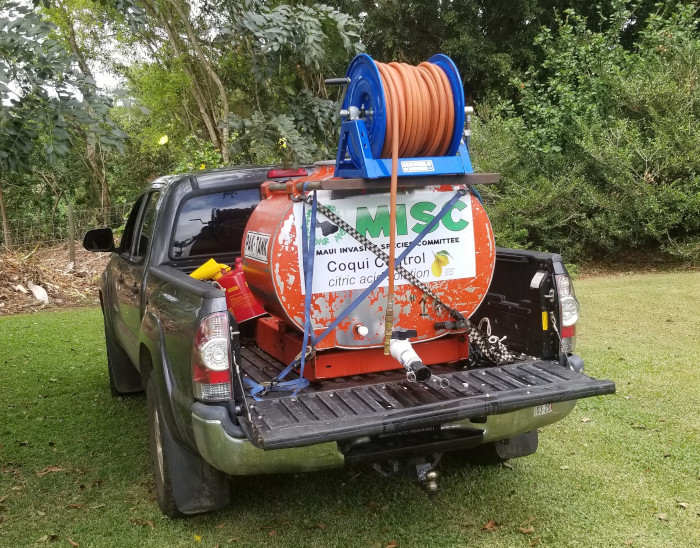Pick up citric from MISC. Coordinate with: Megan Archibald – 808-633-1203
Things you will need:
- Garden, backpack sprayer, or spray bottle
- Citric acid powder
- Water
- Gloves
- Long sleeves/Pants
- Closed-toe shoes
1. Locate Frogs
Spraying is most effective at night time as you can get a quick confirmation if they are not calling post-spray. They are often in-between leaves of bananas, ti plants, palms, and/or bromeliads. They cannot hang upside down. If it is in an area where you can hand-capture it, put it in a plastic bag once captured and dispose of it accordingly.
2. Mix and prep
Many sprayers work for coquis, below are recommendations on which one you might want to use depending on population size.
1-5 Coquis: Zep size cleaning spray bottle, 1-2gl sprayer pump
5-20 Coquis: 1-2gl sprayer pump, backpack sprayer
20+ Coquis: Backpack sprayer, 55gl sprayer and 100gl sprayer (we can loan the latter 2 out)
Mix powdered citric with water at the ratios that we provide when you get the citric. Mixing in a 5 gallon bucket before putting the solution in the sprayer can work well for larger quantities. Only 2 milliliters of solution needs to touch the frog for successful control.
3. Spray
Spray directly where you are hearing the frog. If you cannot see it, use a 10ft buffer to help your chances. They are sensitive to light and movement. Keep your flashlight off until you know you are close and staying quiet can help keep the frog calling. If it does stop calling, you can whistle their “Ko-Kee” tune to encourage them.
If you can’t whistle, this link of a coqui recording works well to get them calling when they fall silent. Some nights the coquis will not be chirping for reasons unknown even though they are still there as surveys the night before proved, and whistling or playing the video can help with that. Spraying every six weeks works best to disrupt the breeding cycle.
4. Cleanup:
No matter what type of sprayer you use, it is best to empty the citric out and store in another container, rinse out the sprayer with water, and spray out that water through the nozzle. The citric can become corrosive over time and ruin the sprayer lines and nozzles.


